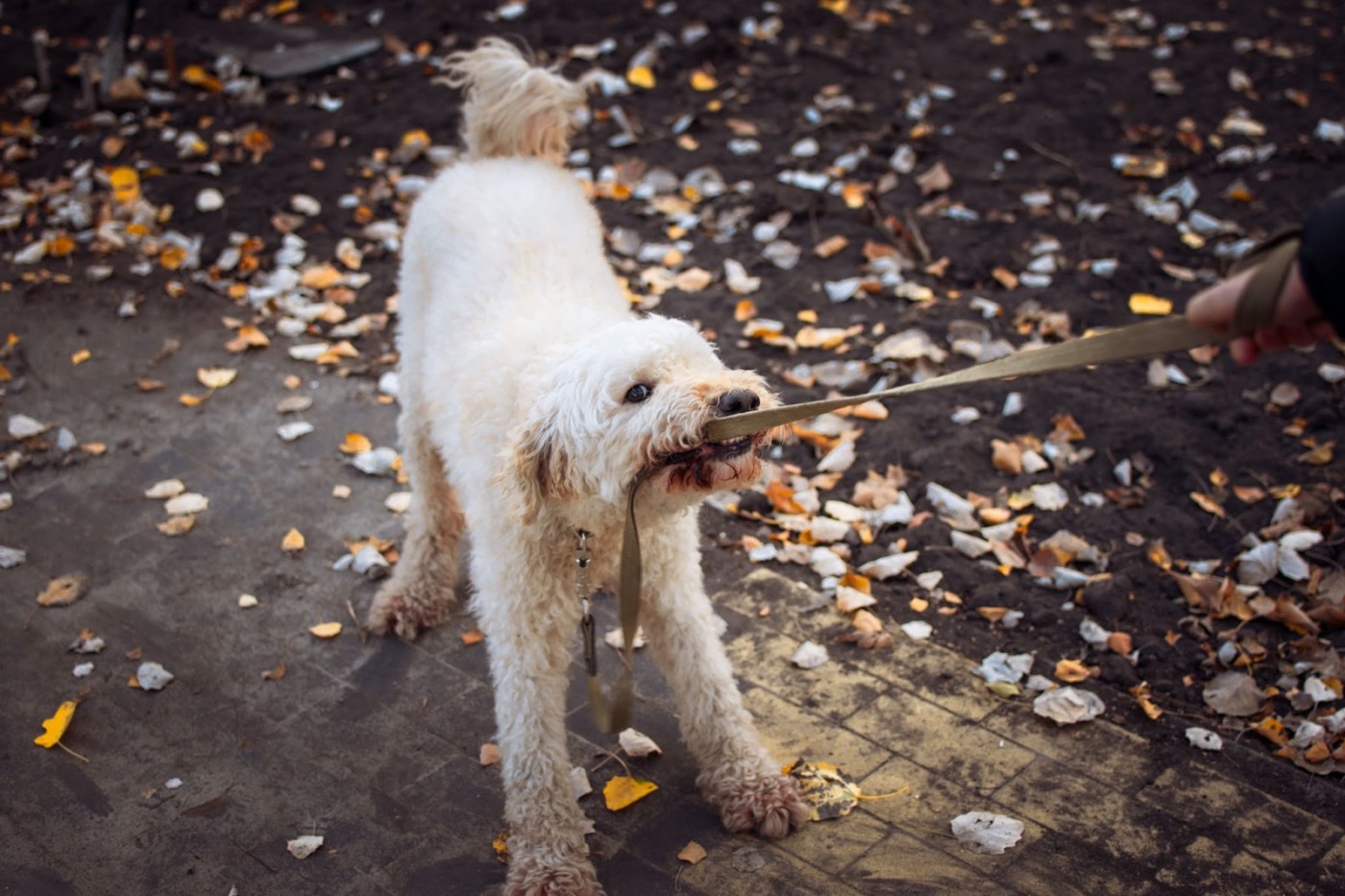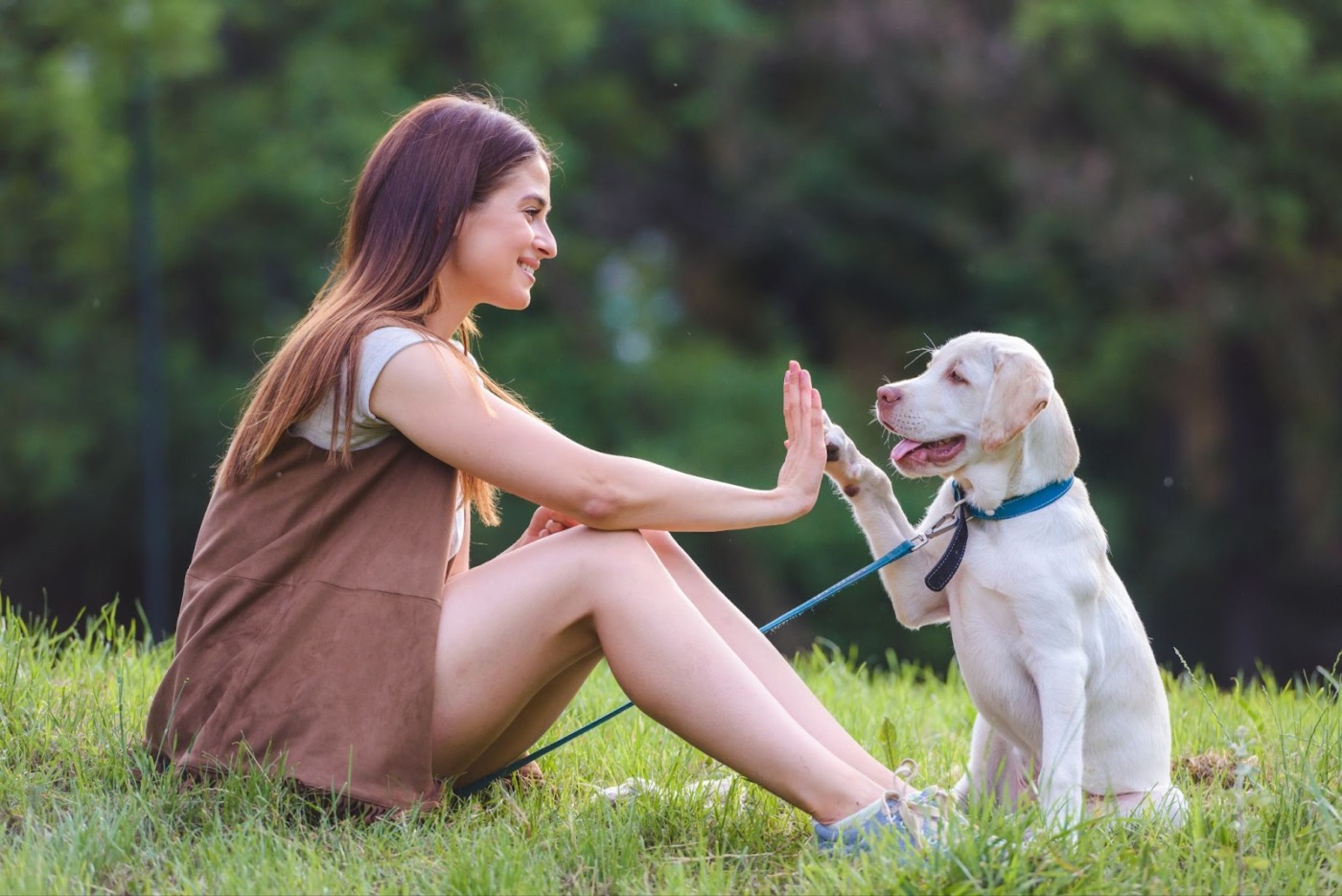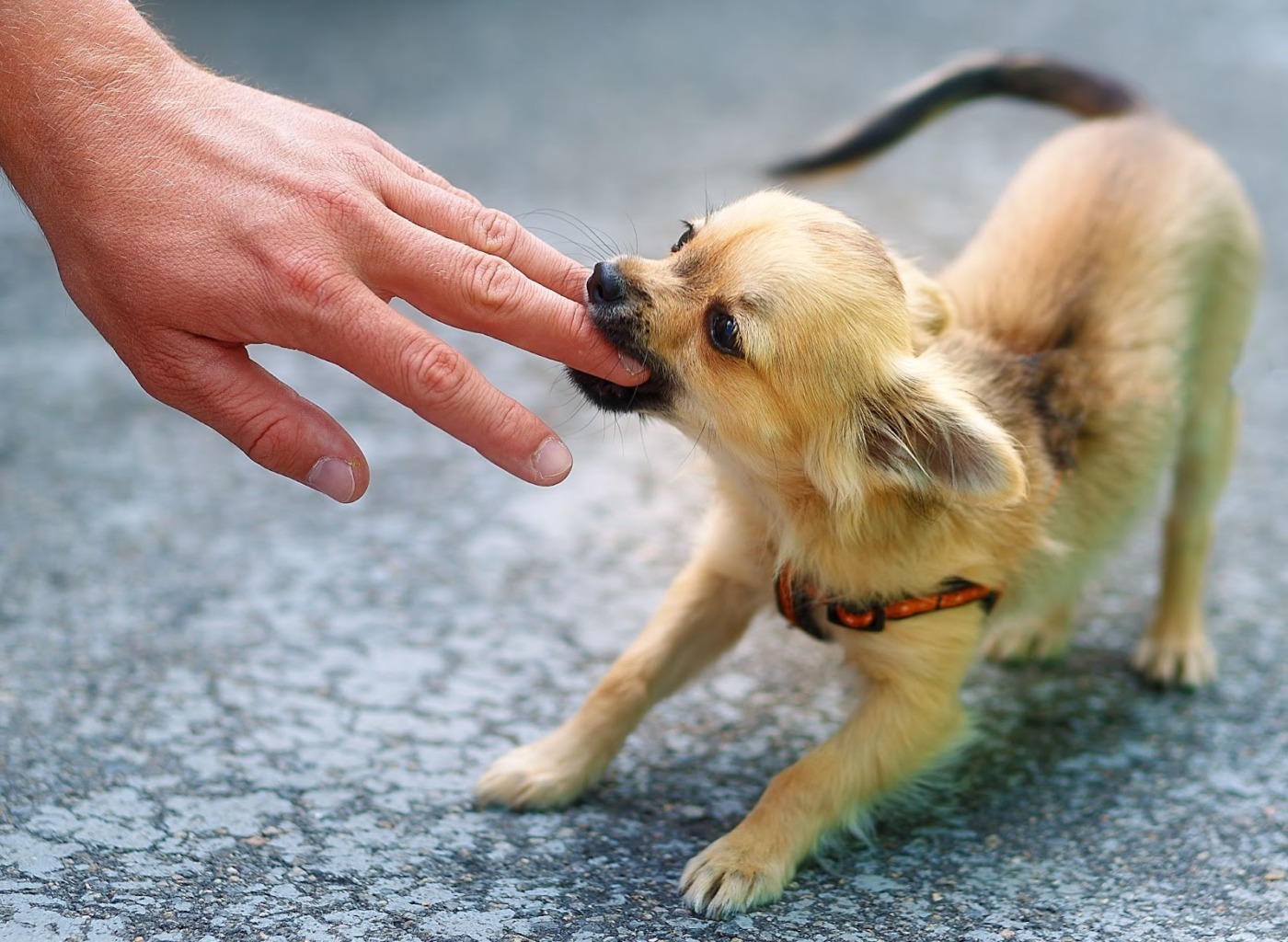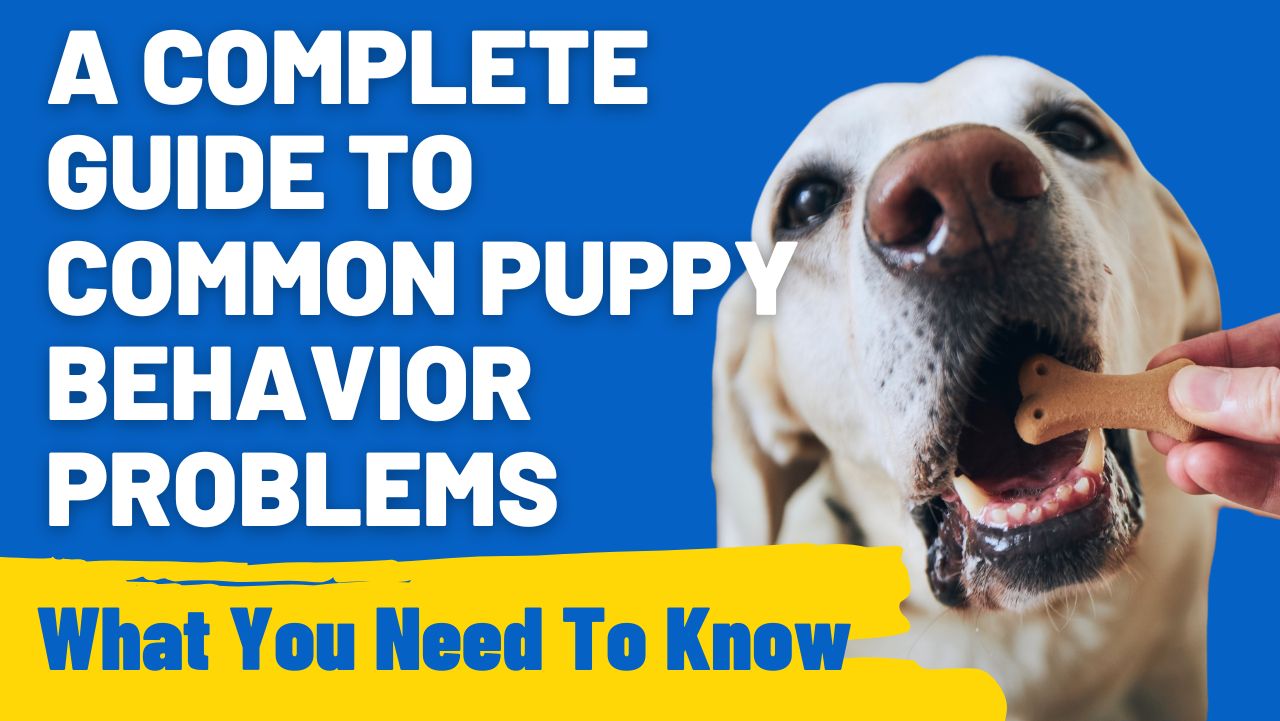Welcoming a new puppy into your home is an adventure filled with joy, but it also comes with its fair share of challenges, particularly in understanding and managing puppy behavior problems.
From the exuberant jumping to the midnight whining, these little bundles of energy can display a range of behaviors that leave many owners searching for solutions.
This blog is designed to provide you with the insights and tools you need to address these issues effectively!
What Are the Most Common Puppy Behavior Problems?

When you bring a new puppy into your home, you’re also welcoming a whirlwind of energy and a series of behavioral challenges that are both natural and, at times, frustrating.
Understanding these behaviors is crucial in developing a healthy relationship with your furry friend.
Among the most common issues that puppy owners encounter are biting and chewing, often driven by curiosity, playfulness, or teething discomfort.
Barking, another frequent concern, can stem from excitement, fear, or the need for attention. Digging in the yard and jumping up on people are also typical behaviors, reflecting a puppy’s instinctual habits or desire for interaction.
Additionally, house training is a significant hurdle for many, as puppies learn to control their bladder and understand where it’s appropriate to relieve themselves.
Recognizing these behaviors as part of a puppy’s development is the first step in addressing them effectively.
How Can Puppy Training Challenges Be Addressed Effectively?
Establishing a Training Routine
The cornerstone of addressing puppy behavior problems lies in establishing a consistent training routine.
A structured daily schedule, encompassing feeding, walks, playtime, and dedicated training sessions, provides a sense of security and predictability for your puppy.
Training should start with simple commands such as ‘sit’, ‘stay’, ‘come’, and ‘down’, keeping in mind that puppies have short attention spans.
These sessions should be brief yet frequent, utilizing consistent commands and gestures to facilitate learning.
The environment in which you train is as important as the routine itself, as is ensuring that everyone in your household is on the same page with the training approach. The goal is to make training a positive, engaging, and integral part of your puppy’s daily life.
Positive Reinforcement Techniques
Embracing positive reinforcement techniques can dramatically improve the effectiveness of your training efforts. This approach is centered around rewarding desired behaviors to encourage their recurrence.
Rewards can vary from treats and verbal praise to affectionate petting or playful interaction.
Timing is critical in positive reinforcement; the reward should immediately follow the desired behavior to reinforce the connection. It’s equally vital to avoid accidentally rewarding negative behaviors.
For example, giving attention to a puppy when they jump up, even if it’s to gently push them away, can be misconstrued as a positive response.
Employing positive reinforcement demands patience and unwavering consistency, but it ultimately fosters a loving and respectful bond between you and your puppy.
Through a combination of a well-structured training routine and the application of positive reinforcement techniques, you can navigate the maze of puppy training challenges with greater ease and effectiveness.
Remember, each puppy is unique, and what resonates with one may not necessarily work for another.
Your journey with your puppy requires patience, understanding, and a willingness to adapt your approach as you both grow and learn together.
Discover the insights in our recent post about When and Why to Vaccinate Your Puppy? Key Vaccination Insights.
Why Do Puppies Exhibit Attention-Seeking Behavior and How to Manage It?

Puppies, like human infants, rely on their caregivers for all their needs, which often translates into various forms of attention-seeking behavior.
Understanding and managing this behavior constructively is essential for a harmonious coexistence.
Reasons Behind Attention-Seeking Behavior
Puppies may seek attention for several reasons. They might feel lonely, anxious, or simply crave interaction and play.
Sometimes, it’s a call for basic needs like hunger or the need to relieve themselves. In other cases, it’s a learned behavior; if a puppy notices that certain actions attract attention, they’re likely to repeat them.
Barking, whining, or pawing are common ways puppies learn to catch their owner’s eye.
Managing Attention-Seeking Behavior
To constructively manage attention-seeking behavior, it’s crucial to provide enough exercise, playtime, and interaction throughout the day. Ignoring unwanted behaviors and rewarding calm, quiet conduct can also be effective.
Establishing a routine helps the puppy understand when to expect attention and interaction. If a puppy is seeking attention for a specific need, such as going outside, it’s important to respond promptly to reinforce positive behaviors.
Consistency in how you respond to these behaviors is key to training your puppy effectively.
What Are the Best Ways to Instill Good Puppy Manners?
Teaching Basic Commands
Basic commands are the foundation of good puppy manners. Commands like ‘sit’, ‘stay’, ‘come’, ‘heel’, and ‘no’ are essential for everyday interaction and control.
Training should be consistent, using positive reinforcement to encourage and reward the desired behavior.
Regular, short training sessions are more effective, keeping the puppy engaged and learning.
Socialization Tips
Socialization is crucial in teaching puppies how to interact appropriately with people and other animals. Here are some tips:
- Introduce your puppy to a variety of people, animals, environments, and sounds in a controlled, positive manner.
- Allow your puppy to explore these new experiences at their own pace, offering praise and treats for calm behavior.
- Enroll in puppy socialization classes to provide structured interaction with other puppies.
- Remember, the critical socialization period for puppies is between 3 and 14 weeks of age.
Housetraining is perhaps one of the most daunting tasks for new puppy owners. It requires a blend of patience, consistency, and understanding.
The process can be smooth and successful with the right approach and expectations.
Establishing Routines
Start by establishing a consistent routine for your puppy. This includes regular feeding times, as puppies typically need to relieve themselves shortly after eating.
Immediately after they finish their meal, take them to a designated potty area. Consistency in the location helps the puppy associate that specific area with bathroom breaks.
Understanding Puppy Bladder Control
Recognize that puppies have limited bladder control. A general rule is that a puppy can control their bladder for one hour for every month of age.
Therefore, a two-month-old puppy might need to go outside every two hours. This frequency decreases as they grow older and gain more control.
Positive Reinforcement
When your puppy successfully goes to the bathroom outside, immediately reward them with praise, affection, or treats. This positive reinforcement helps them understand that going outside is a good behavior.
Dealing with Accidents
Accidents are inevitable in housetraining. When they happen, it’s important to remain calm and avoid scolding your puppy.
Instead, clean up the accident thoroughly to remove the scent, as this can prevent them from using the same spot again. Using enzymatic cleaners can help eliminate odors effectively.
Crate Training
Crate training can be a useful tool in housetraining puppies. Dogs naturally avoid soiling their sleeping areas, so using a crate can help teach bladder control. Ensure the crate is comfortable and not used as a punishment.
Watching for Signs
Pay attention to signs that indicate your puppy needs to go out, such as sniffing, circling, or whining. Promptly taking them outside when these behaviors are observed can prevent accidents and reinforce good habits.
What Solutions Help in Curbing Puppy Nipping and Biting?

Puppies explore the world with their mouths, which often leads to nipping and biting. While this behavior is normal, it’s important to guide your puppy toward more appropriate behaviors.
Redirecting the Behavior
When your puppy starts to nip or bite, redirect their attention to a toy or chew bone. This teaches them what is acceptable to bite. Keep a variety of chew toys handy to make this puppy nipping and biting solution easier.
Using ‘Ouch’ Technique
If your puppy bites you, let out a loud, high-pitched “Ouch!” This mimics the reaction of another puppy during play, signaling to your puppy that the bite was too hard.
After saying “Ouch,” pause the play for a moment. This helps the puppy understand the consequence of their biting.
Managing Playtime
Ensure that playtime does not get too rough or overexcited, as this can escalate biting behavior. Keep play sessions short and calm, and if the puppy becomes too excited, take a break.
Consistency in Training
Everyone in the household should follow the same rules and techniques when dealing with nipping and biting. This consistency helps your puppy learn faster.
Professional Help
If biting persists or becomes aggressive, consider seeking help from a professional dog trainer or behaviorist. They can provide tailored advice and training techniques specific to your puppy’s needs.
Understanding and Managing Young Dog Misbehavior
Young dog misbehavior is often a natural part of their development, but understanding the reasons behind it is key to effective management.
Reasons Behind Misbehavior
- Lack of Training: Young dogs may not fully understand what is expected of them, especially if they haven’t been consistently trained.
- Boredom and Excess Energy: High energy levels and lack of mental or physical stimulation can lead to destructive behaviors.
- Fear and Anxiety: Fearful responses to new environments or situations can manifest as misbehavior.
- Seeking Attention: Dogs are social animals and may misbehave to get your attention.
- Natural Instincts: Behaviors like digging, chewing, or barking are often instinctual.
Strategies for Management
- Consistent Training: Establish clear, consistent rules and routines to help your dog understand expected behaviors.
- Regular Exercise: Ensure your dog gets enough physical activity to burn off excess energy.
- Mental Stimulation: Engage their minds with training exercises, puzzles, and toys.
- Positive Reinforcement: Reward good behavior to encourage repetition.
- Socialization: Expose your dog to different people, animals, and environments to reduce anxiety.
Effective Puppy Discipline Tips for New Owners
Gentle, consistent discipline is key in training puppies. The goal is to correct behaviors effectively without resorting to punishment.
- Redirect Bad Behavior: Instead of just saying “no,” redirect your puppy’s behavior to an appropriate activity.
- Consistency is Key: Ensure all family members respond to misbehaviors in the same way.
- Time-Outs: If your puppy gets too riled up, a short time-out in a crate or quiet room can help them calm down.
- Avoid Physical Punishment: This can lead to fear and aggression. Instead, use firm, verbal commands.
- Reward Good Behavior: Positive reinforcement is more effective than punishment in long-term behavior modification.
Summary of Common Puppy Issues and Solutions
| Common Issues | Recommended Solutions |
| Biting and Nipping | Redirect to chew toys, use “Ouch” technique, avoid rough play |
| Excessive Barking | Teach “quiet” command, ensure adequate exercise. Use HoundGames Dog Bark Corrector for an effective no-shock bark control. |
| Chewing | Provide appropriate chew toys like the HoundGames Dog Puzzle Toy, keep valuables out of reach |
| Jumping Up | Turn away and ignore, reward when all four paws are on the ground |
| Housetraining Accidents | Establish routine, reward outdoor elimination, clean accidents with enzymatic cleaner |
| Pulling on the Leash | Use a no-pull harness, stop walking when pulling occurs |
| Not Listening to Commands | Reinforce training, ensure you have your puppy’s attention |
| Separation Anxiety | Gradual desensitization to being alone, provide engaging toys |
Conclusion
Throughout this guide, we’ve explored various aspects of puppy behavior, from housetraining challenges to managing puppy attention-seeking behavior, and provided actionable solutions to help you and your puppy thrive together.
Remember, patience, consistency in training, and understanding are key to addressing these challenges. Each puppy is unique, and what works for one may not work for another.
With the strategies and tips outlined in this guide, you are now better equipped to understand and effectively manage your puppy’s behavior, paving the way for a happy and well-adjusted canine companion.




